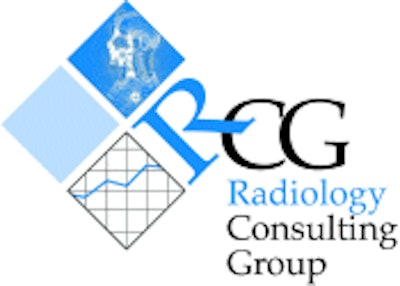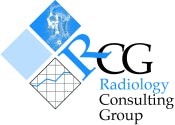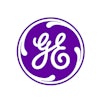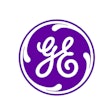
"You can fool all of the people some of the time; you can even fool some of the people all the time; but you cannot fool all of the people all the time." -- Abraham Lincoln
By Sam Kopper
Radiology Consulting Group

The systems get mixed reviews depending on the audience. Referring physicians and patients are well served by report turnaround times that drop from days to hours or even minutes. Hospital administrators value voice recognition for its dramatic cost savings. However, radiologists often complain about the systems, or question their benefits.
Nevertheless, it is possible for voice recognition dictation systems to equally satisfy administrators, referring physicians, patients, and, at the same time, keep radiologists happy.
The three parties to this debate have slightly different priorities. Patient care is, of course, at the top of all lists, but, immediately after that, the goals diverge slightly.
Satisfying multiple agendas
Radiologists universally have two directly related imperatives. They want to be able to focus, literally and figuratively, on the image, provide clear and thorough interpretation using well-chosen words, and be able to work as quickly as possible. Radiologists shouldn’t be subjected to dictation medium/technology, which diverts their attention with technical glitches. Nor do they want to be slowed up unnecessarily.
As for radiologists, "Methinks you doth protest too much," because the jury’s in on at least three aspects of voice recognition dictation. First, it’s an extremely valuable service to patients, referring physicians, and to an institution’s bottom line. Furthermore, it doesn't need to be more than a minor inconvenience to use, provide you learn to "work the program." Over the course of the next few years, voice recognition technology will only improve.
Satisfying the needs of radiologists is only one goal of voice recognition. Additional goals include dramatically reducing report turnaround time and achieving significant cost savings.
Massachusetts General Hospital (MGH) in Boston accomplished significant cost savings and reduced report turnaround times within the first year of voice recognition implementation. Following implementation, turnaround time fell dramatically, from 4 days to 0.4 days.
The integration of voice recognition into the PACS has also helped to achieve significant improvements in operations. Financially, cost savings were equally dramatic. In 1998, before voice recognition was implemented, MGH conducted more than 400,000 exams, and had annual transcription operating costs of nearly $550,000. Following the final phase of the voice recognition rollout, annual transcription costs dropped to less than $50,000.
Compromise and cooperation
We’ll be brutally honest to both sides in this argument: Voice recognition technology is not yet where it should be. This does not necessarily mean that you should wait to implement. Rather, there are simply a few "musts" you need to follow in its deployment. There are three immutable musts for radiologists and administrators to keep in mind:
Radiologists: remember that the more you relax and "work" the program/play by its rules, the better the program will perform for you. Use those macros; they’ll allow you to gain back any time you might lose to technical glitches. At the MGH, where Talk Technology’s TalkStationRadiology is online, utilizing "train words" and the "correct" command greatly improves word recognition accuracy and thus speeds up the work. If you refuse to utilize these tools, you will have a harder time with the program.
Administrators: be certain that you provide adequate information systems (IS) staff support for voice recognition. When an online radiologist calls for help, IS support should be at his or her side within fewer than five minutes. This type of support has two results: (a) it bails the radiologist out of a specific immediate problem, and (b) it relays an important message, that your department is as committed to its radiologists’ interests as it is to cost savings and report turnaround time.
Also, be certain that you provide complete, detailed training and certification for your radiologists. Going forward, be sure to occasionally monitor radiologists in order to identify both average users and "slackers." Remedial training is critically important to your ultimate success. Improving radiologists’ performance leads to increased departmental productivity and will make the radiologists happier. Good morale is an extremely valuable commodity.
There are precious few, if any, advancements in human history that don’t involve at least some controversy and struggle. In recent years it seems that progress often comes with a bit of baggage. For example, e-mail is a wonderful and efficient communications tool. Yet despite its ease and convenience, we often find ourselves bogged down with irrelevant forwarded mail, and pages and pages of bad jokes.
Similarly, modern telephone call-routing systems increase efficiency and reduce expenses for businesses. On the other hand, customers calling for assistance might consider the systems frustrating, and a waste of their valuable time.
Such is the case with voice recognition, at least for the time being. Online radiologists may find that voice recognition slows them down. However, their slightly reduced throughput is certainly counter-weighted by what is most important today: more efficient and effective patient care. Report turnaround times of minutes or hours, versus days, is a wonderful revolution in the service radiologists provide for referring physicians and their patients.
By Sam Kopper
AuntMinnie.com contributing writer
February 26, 2002
Kopper is senior applications analyst for PACS and voice recognition in the department of radiology at Massachusetts General Hospital in Boston.
Related Reading
Budget monitoring reveals practice’s financial health, January 24, 2002
Creating a strategic patient safety agenda in radiology, December 28, 2001
Educational investment pays off in the radiology workplace, November 9, 2001
How to avoid PACS buyer’s remorse, September 27, 2001
Strategic plan allows smooth transition from film library to image service center, August 29, 2001
This story is one in a series of monthly practice management articles contributed by the Radiology Consulting Group in Boston. The articles address topics and issues of concern to radiology administrators and business managers.
Copyright © 2002 Radiology Consulting Group



















